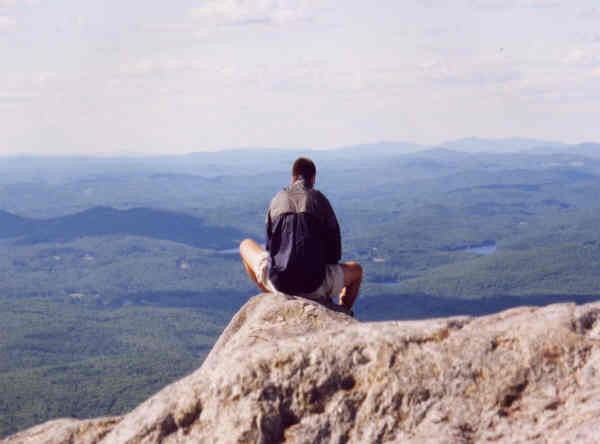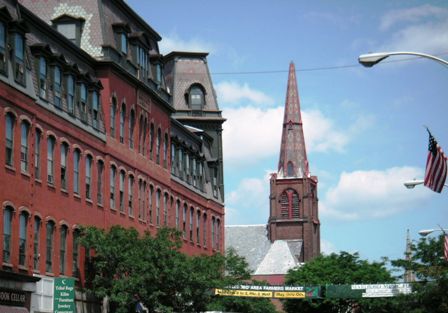|
media (ch 8)
Points to ponder:
- It is useful to think about certain phases of news production and consumption in the US
- in the early period, through the 1820s, the press in the US can be characterized as an elite medium, targeted at the relatively small literate public of landowning white males who had voting rights; newspapers were often clearly partisan
- the penny press democratized news consumption and coincided with expansion of the electorate to include white males without regard to property ownership (all this beginning with a period called Jacksonian democracy)
- economic development in the late 19th century--which was associated with urbanization, transportation improvements and increasing use of commercial products (in place of home- or very locally-produced goods)--made advertising an important source of newspaper income with the result that circulation numbers became increasingly important; attracting a large readership made it important to appeal to mass tastes, however inclined toward sensationalism, and bad business to be very partisan which might drive off prospective readers
- starting in the 1920s, the development of radio and then television brings a period of broadcast news and entertainment, where the emphasis is on broad because the potential for a national audience meant that news organizations had to adjust to a larger, less differentiated public across the continent and so news had to appeal to a more general, diverse population (this also had the effect of homogenizing the audience such that listeners and viewers were receiving less local, less parochial information and perspectives); aside from the commercial incentive to build a mass, national audience, because radio and television stations were licensed by the government to serve the public interest, convenience, and necessity, they were constrained from taking narrow, partisan positions and instead pushed to market their broadcasts to as large an audience as possible
- several technical and business developments have in the last twenty to thirty years increased the options for narrowcasting, producing news for smaller segments of the public who by their own selective use of the media can screen out information and perspectives they individually don’t wish to hear (recall Coleman et al. [315-19] on selective exposure, selective perception, and selective retention); these would include Richard Viguerie and developments in the late 1960s and then in full throttle in the 1970s in computers, databases, and associated technologies that came together in the use of mass mailings for political purposes (both information distribution and fundraising); changes in the business of marketing which thought to use computer data to identify and target specialized audiences; the emergence of cable television which chipped away at the three national networks and, in any event, found that it could prosper by focusing on small market segments; the world wide web which made much more information available to citizens but, even more, allowed citizens to choose what information they would receive
- Because the bulk of US media is private and for-profit, business calculations have an important impact on what gets covered, as is suggested by a report on a drawdown of television news minutes devoted to Iraq (B. Stetler, "Reporters say networks put war" NYT 23 Jun 08) in the first half of 2008 as compared with 2007, but there is also evidence that the press of competing stories and news executives' judgments of audience receptivity also play a role
- As much as we suspect that mass media have important political effects on the political socialization of citizens, on their political information and opinions, and on their political behavior, tracing those effects is very difficult, in large part because media in all its forms—newspapers and magazines, radio and television, music CDs and movies, and the web—are ubiquitous; each person receives such a continuous stream of beams from such a tremendous number and variety of sources that it becomes extremely difficult to isolate the effect of any one source
- A lot of what Coleman et al. have to say about media deals with the direct effects of newspapers, broadcast and cable channels, and internet sources on citizens, neglecting the point that much of what we know (or think we know, be it true or false) we know not because we've seen it or read it but because someone told us about what they've seen or read; in other words, we should also be sensitive to the proposition that much political communication occurs through a two-step flow in which we are "informed" by reports from family, friends, and coworkers of what they have seen and heard.
- Though access to government information (Coleman et al.: 528) is a civil right that applies to all citizens, the specific provisions for freedom of information and government in the sunshine (open hearings rules in the House of Representatives and Senate [Rule XXVI.5.b] and the “Government in the Sunshine Act” [5 US Code Sec. 552b]) are critical to the effectiveness of the press as a watchdog on government and so should be introduced in this consideration of the media and politics; the underlying principle is that government business is the public’s business and as members of the public you have a right to your business--the presumption is in favor of open access to government information and proceedings, with specified exceptions (national security, personal privacy, and proprietary information) which government bodies have to document to deny the public access.
Question to consider: Based on what you've read in this chapter,how would you respond to the comment of two communications researchers, McCombs and Shaw, who wrote in 1977, "The mass media may not be successful in telling us what to think, but they are stunningly successful in telling us what to think about?"
|

